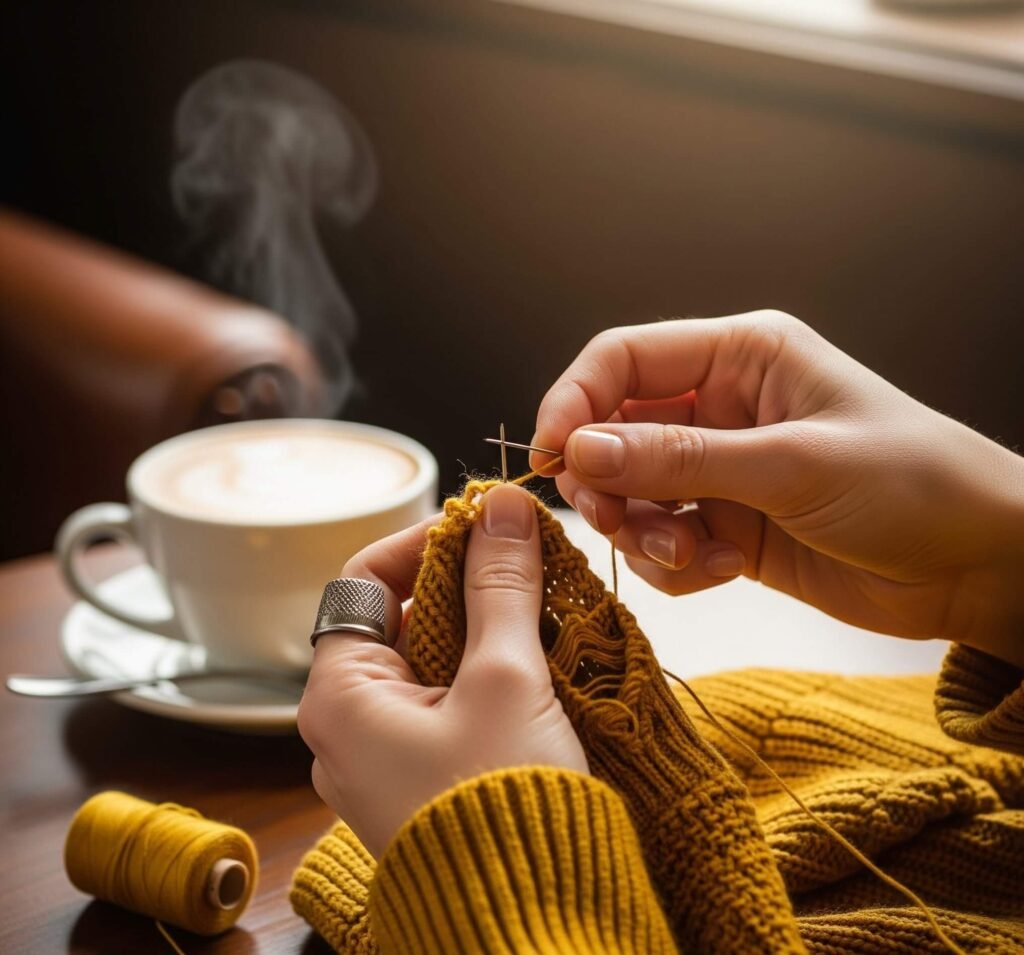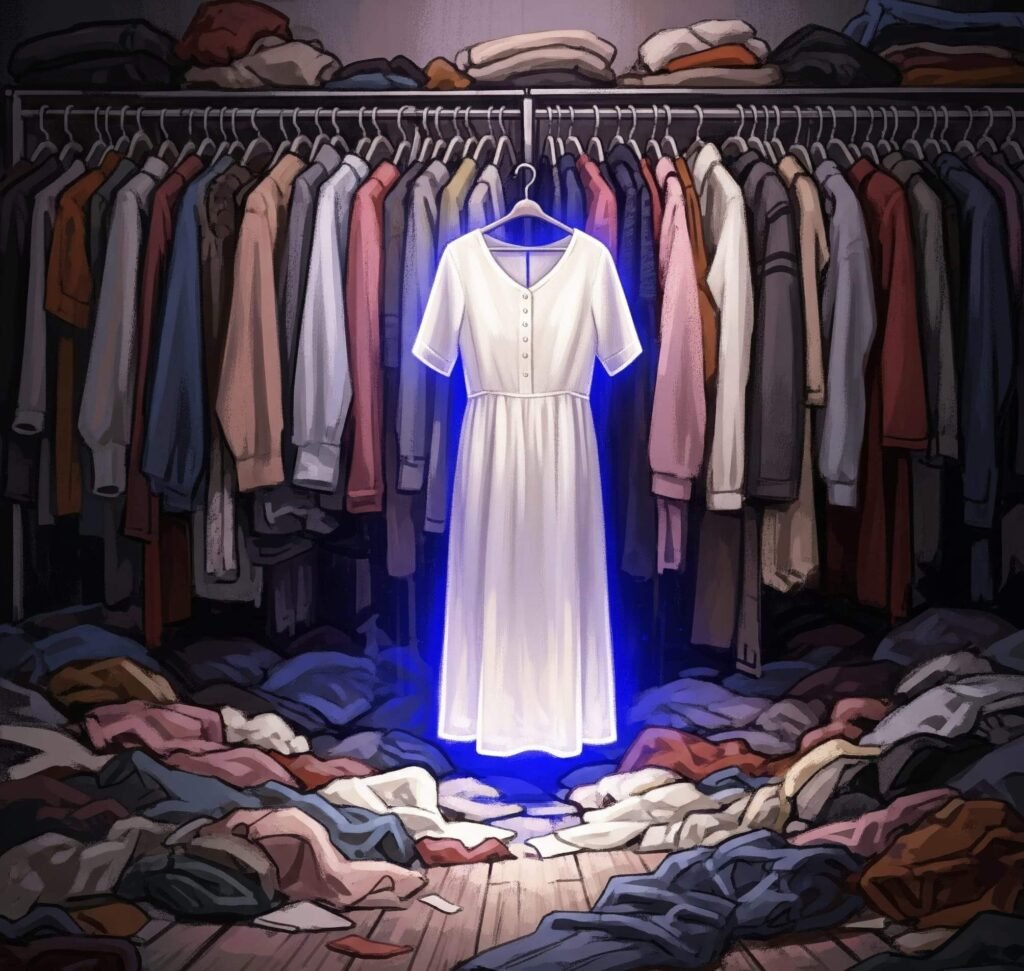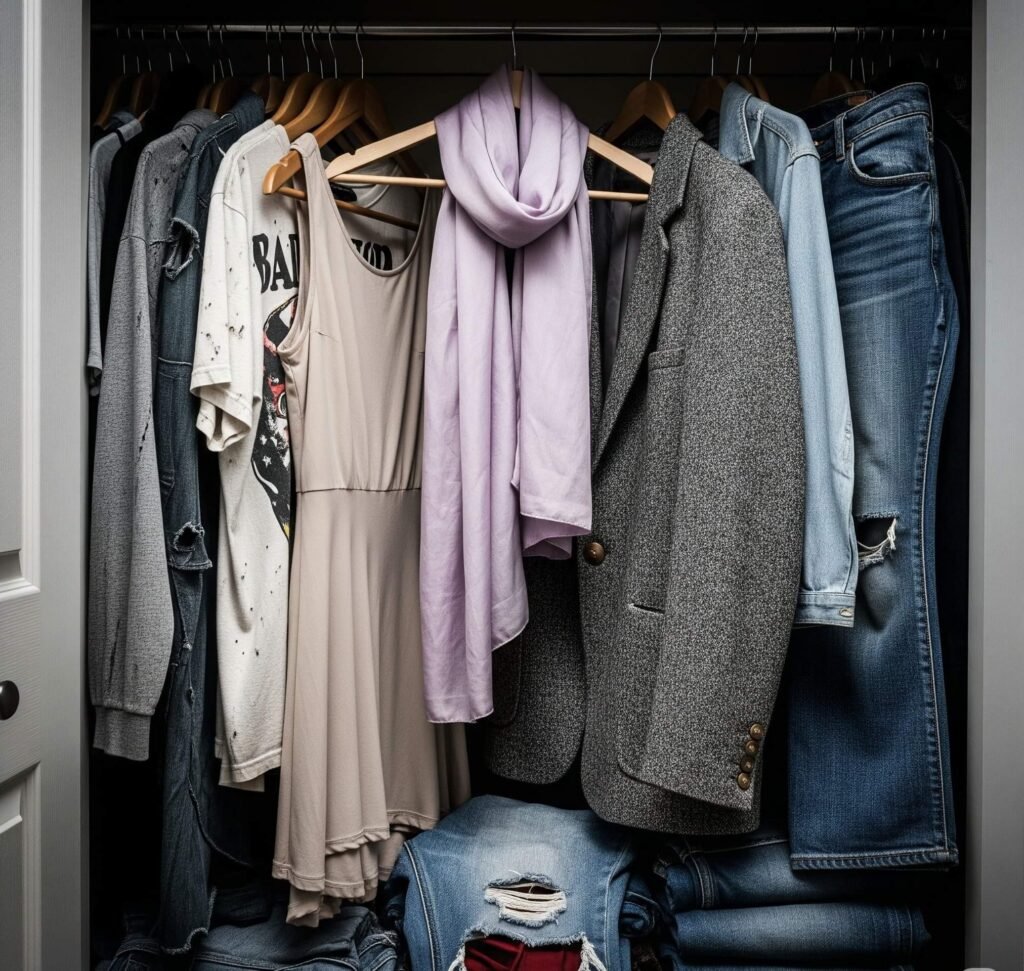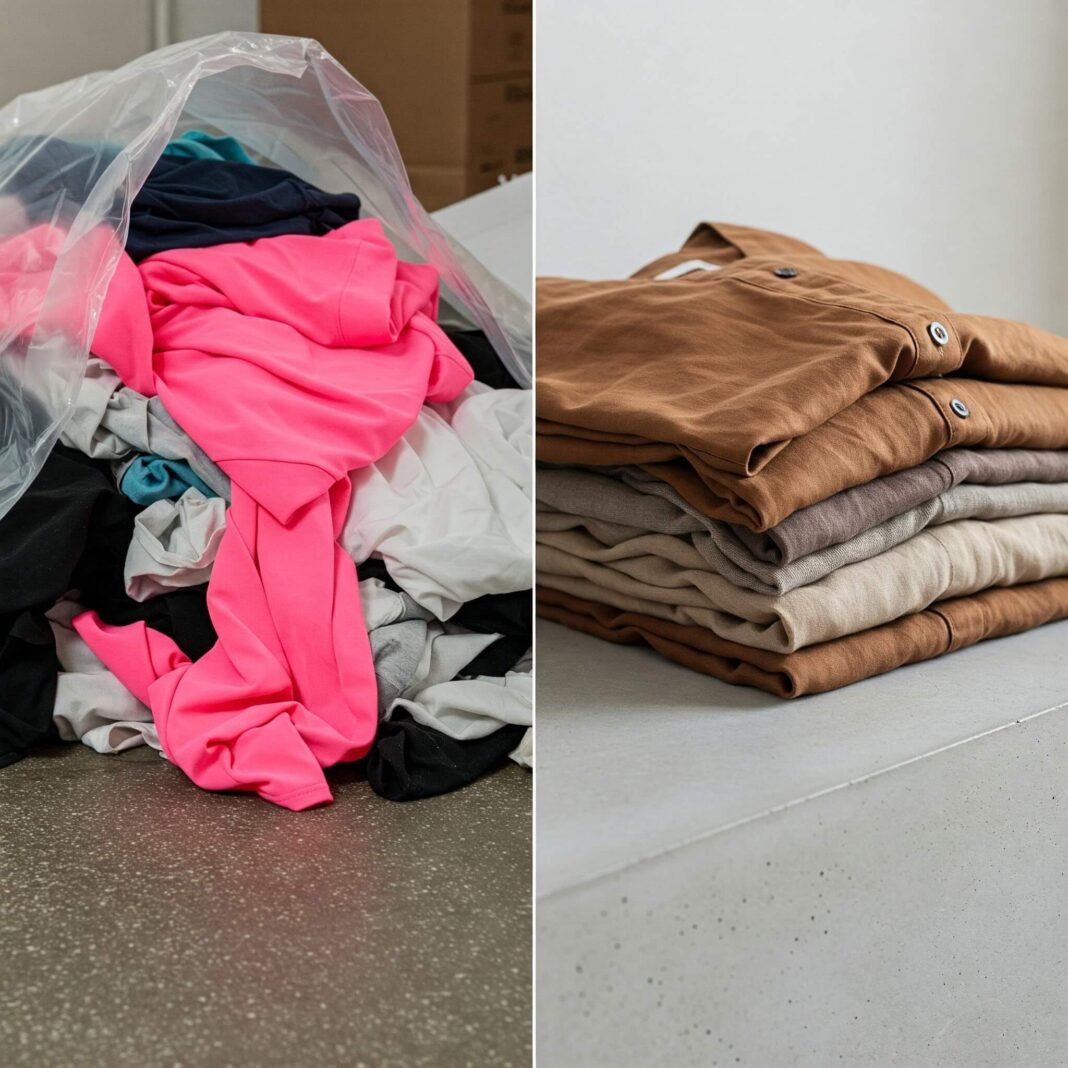Slow fashion’s all about clothes that don’t suck—made right, last long, and don’t trash the earth. I learned this after a thrift store run in Bushwick, where I found this wool coat for $15. It’s got this weird coffee stain I can’t get out, but it’s cozy and hasn’t unraveled like my fast fashion hoodies. I was sweaty, rifling through racks, and probably looked like a lost puppy, but that coat felt like a win. Fast fashion’s like ordering takeout—it’s quick, cheap, but you regret it later. Slow fashion? It’s like cooking a real meal. Takes effort, but damn, it’s worth it.
Here’s what I’m loving about slow fashion:
- It Lasts: My thrifted jeans have been through two winters and still look fire. My fast fashion leggings? Ripped at a bar in one night. Oof.
- Better Vibes: Sites like Fashion Revolution opened my eyes to how fast fashion screws over workers. Slow fashion brands like Patagonia actually care about people.
- Unique AF: My thrift finds have stories—like this scarf I’m pretty sure belonged to a quirky grandma. Fast fashion? It’s just copy-paste TikTok trends.
- H3: My Fast Fashion Faceplant Moment
So, last Halloween, I bought this fast fashion “sexy cat” costume. Thought I’d be cute, right? Nope. By 10 p.m., the tail was shedding, and I was dodging sequins like landmines. I spent $30 and looked like a glitter bomb exploded. Meanwhile, my thrifted flannel—$7, smells like cedar—has been my ride-or-die all year. Slow fashion vs fast fashion? I’m picking team slow, even if I’m still a rookie.

H2: Fast Fashion’s Shady Side (I Fell for It Hard)
Fast fashion’s like that sketchy dude at a party—charming, but trouble. I used to stay up late, scrolling Zara or Shein, tossing $8 skirts in my cart like it was a game. My bedroom’s carpet is still scarred from those plastic shipping bags. I’d tell myself, “It’s fine, it’s cheap!” but then my card got declined at a bodega, and I was like, “Wait, what?” Fast fashion’s a scam, and I was its biggest fan.
Here’s the tea, based on my panic-Googling and Good On You:
- Planet Killer: Fast fashion’s 10% of global emissions and piles of landfill waste. My closet was basically a trash heap.
- Worker Exploitation: Sweatshops pay pennies for brutal hours. A BBC article on garment workers broke my heart.
- Trend Hell: Fast fashion pushes trends that die in a month. I bought platform sneakers because of Instagram. Now they’re collecting dust.
H3: My Cringiest Shopping Fail
Okay, true story: I’m in a Manhattan H&M last month, lured by a “50% OFF” sign. The store smelled like cheap perfume and desperation. I grabbed a $12 dress, thinking I’d wear it to a date. Spoiler: it tore when I tried it on, and I had to slink out, pretending I didn’t break it. I’m still embarrassed. Slow fashion would’ve had me covered with something sturdy, not a one-wear disaster.

H2: How I’m Stumbling Into Slow Fashion (and Tripping A Lot)
Switching to slow fashion’s tough when you’re broke and your laundry’s a nightmare. My apartment’s a chaos zone—think mismatched socks and a coffee maker I forgot to clean. But I’m trying, and here’s how I’m making slow fashion work, flaws and all:
- Thrift Hard: I hit Goodwill or Poshmark for deals. Found a silk blouse for $10 once—smelled like old perfume, but I’ll take it.
- Fix Stuff: I’m terrible at sewing, but YouTube’s got my back. My jeans have wonky patches now, and I’m kinda proud?
- Buy Less: I only grab stuff I love. My slow fashion cardigan? It’s my baby. Fast fashion? I’m done with that noise.
H3: My Slow Fashion Wins (and Total Flops)
I tried a clothing swap with friends last weekend. Disaster—someone spilled IPA on my rug, and I lost a hat I loved. But I snagged a slow fashion linen skirt that’s now my fave. My flop? I caved and bought a fast fashion beanie online yesterday. It arrived, looked like trash, and I’m donating it tomorrow. I’m a work in progress, okay?

Conclusion: Slow Fashion’s My Chaotic Vibe, and Maybe Yours Too
Alright, I’m not perfect. I’m just a guy in Brooklyn, dodging takeout containers and trying not to tank the planet with my shopping. Slow fashion vs fast fashion’s taught me to own my screw-ups—like that glittery dress fail—and aim for better. I’ve wasted cash, chased trends, and learned slow fashion’s where it’s at. Next time you shop, maybe skip the $5 tee and check out ThredUp or a local thrift joint. Hit me up with your own shopping disasters—I’m all ears!
Outbound Links for Credibility:
- The True Cost documentary (because guilt-tripping works)
- Good On You ethical brand directory (for when you’re ready to adult)
[Insert Final Image Placeholder: A crumpled fast-fashion receipt with “WHY” scribbled in Sharpie—darkly humorous, slightly out-of-focus.]










































